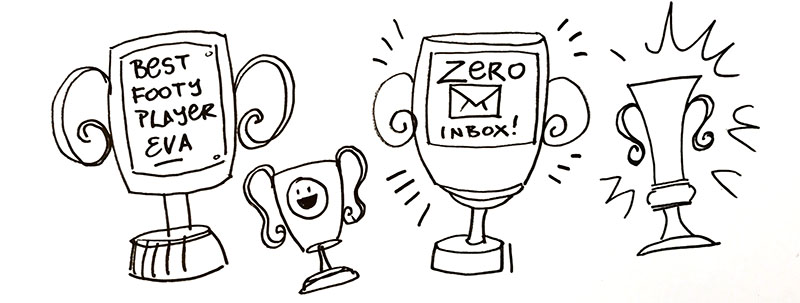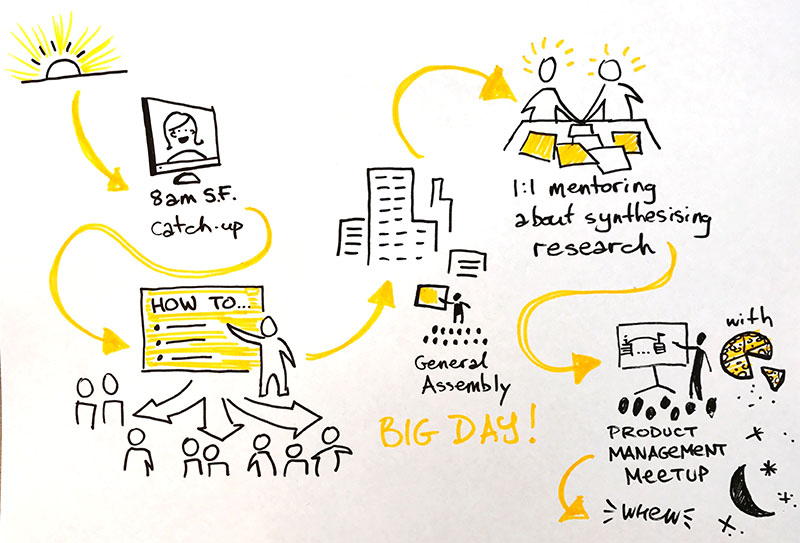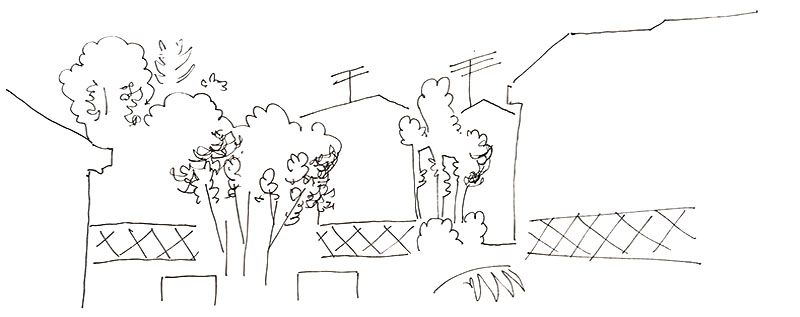Have you been working away on improving your sketching, and looking for ways to up your game a little? If that’s the case, grab a marker and some paper, and try these 5 easy ways to add more life and character to your sketches. Actually, it’s more like 5.5 ways… You’ll see…
1. Add a dash of detail that tells a story
Surprise is always a great trick to help embed your message or idea deeper into your viewers’ brains. Push your powers of imagination a little further, and add something fresh and unexpected to an otherwise regular icon to enhance the meaning, or hint at a story.
2. Make it move
Sketching things that look like they’re moving always adds energy. What would the thing you’re sketching look like if it were stretching, or bouncing? Wiggling, or racing ahead at break-neck pace?
3. Excite the eyes with some EXAGGERATION!
Whatever you’re sketching, think: what could I exaggerate to add more interest? Think about the relative size of some parts, or the pose of a figure, or even the texture of an object.
4. Snazz it up with a splash of colour
Any sketch is going to be more eye-catching with a splash of colour. You don’t have to go overboard; even just one colour can turn a humble hat from “ho-hum” to “HUZZAH!”
It’s worth paying attention to the way you apply the colour: strong decisive areas and lines are much more visually appealing than thin scratchy marks.
And here’s the bonus half a tip: dial up the contrast with areas of black, or dark colour. Our eyes are drawn to areas of high contrast; if you’re sketching in black, don’t be afraid of using strong areas of black. This will really make your sketches more eye-catching.
5. Put a face on it
Ever since I saw that Portlandia episode, I’ve always remembered that phrase “Put a bird on it!”. Just like putting a picture of a bird on any objet de home décor makes it more hipster, putting a face on any inanimate object instantly adds charm and character.
Here’s the magic: we can’t help seeing faces in things, and as soon as we see a face on something, we can’t help but attribute a personality to it, depending on the face’s expression. So, make your sketches and whiteboard drawings instantly more fun, attention-grabbing and memorable with faces!
Try these tricks out today. The more you bring life, story and character to your sketches, the more people will take notice of them, and the more they’ll remember them, and therefore the more they’ll remember your message and your ideas.
Have fun with it, and don’t be shy about letting me know how you went with applying these tips.









